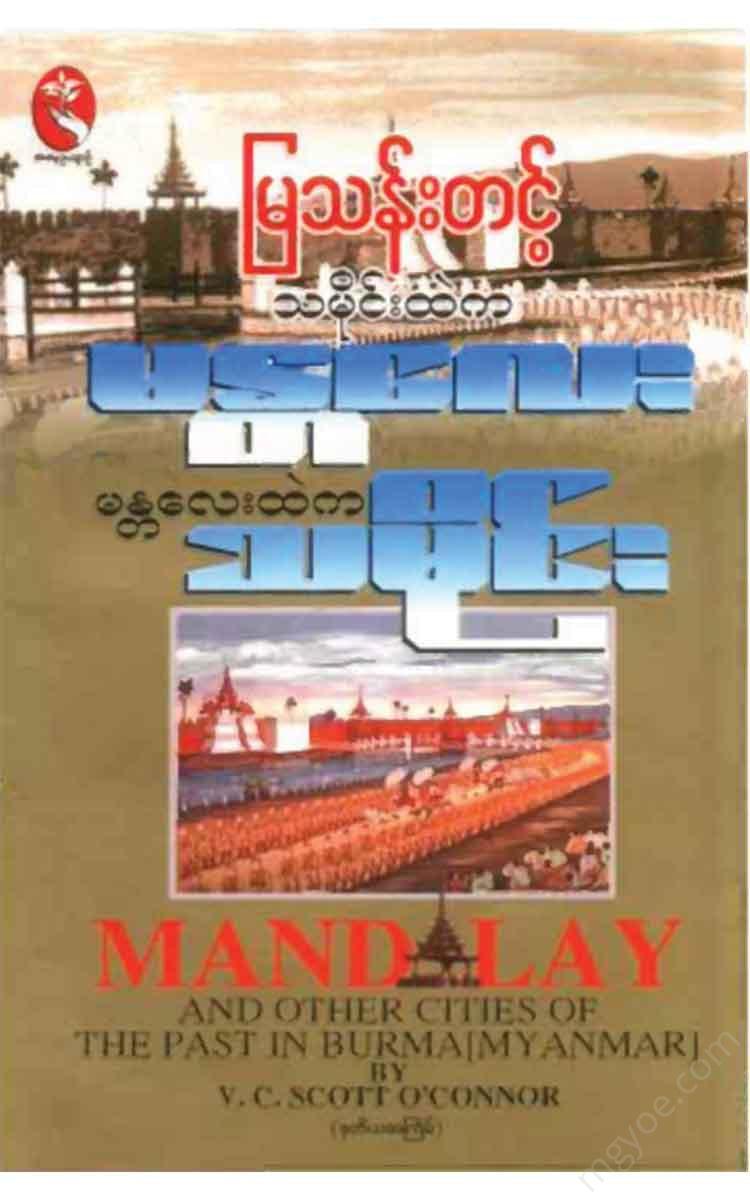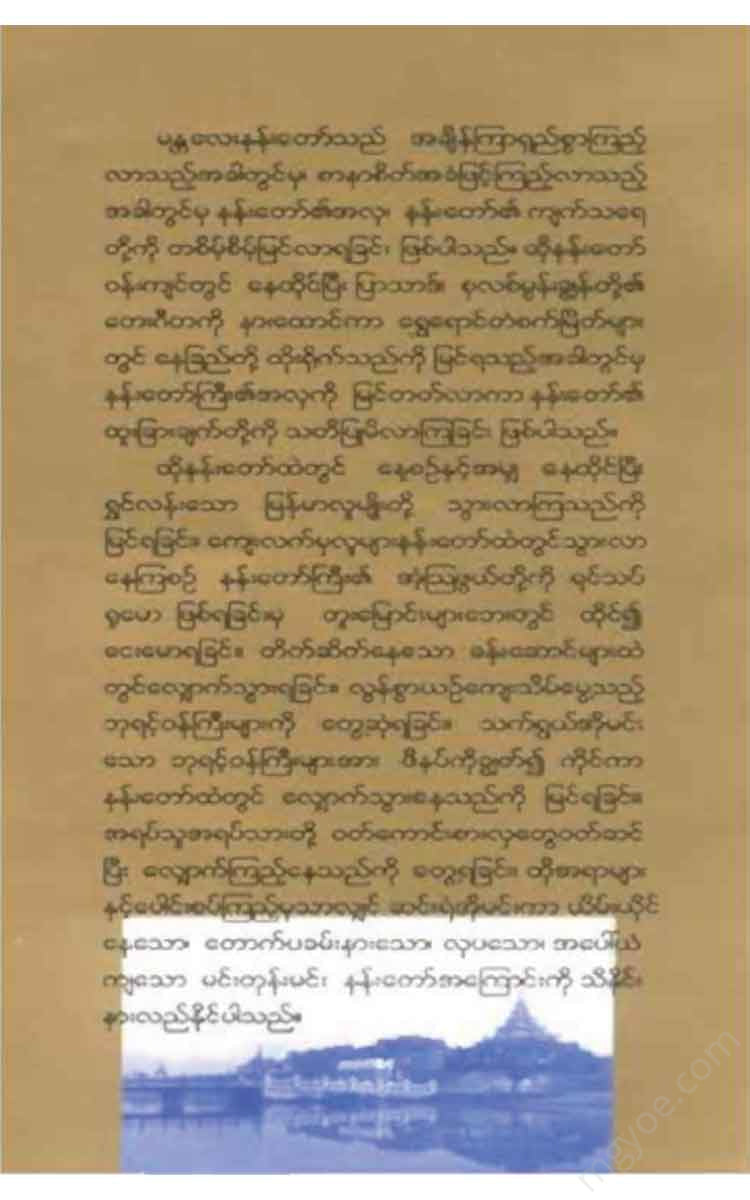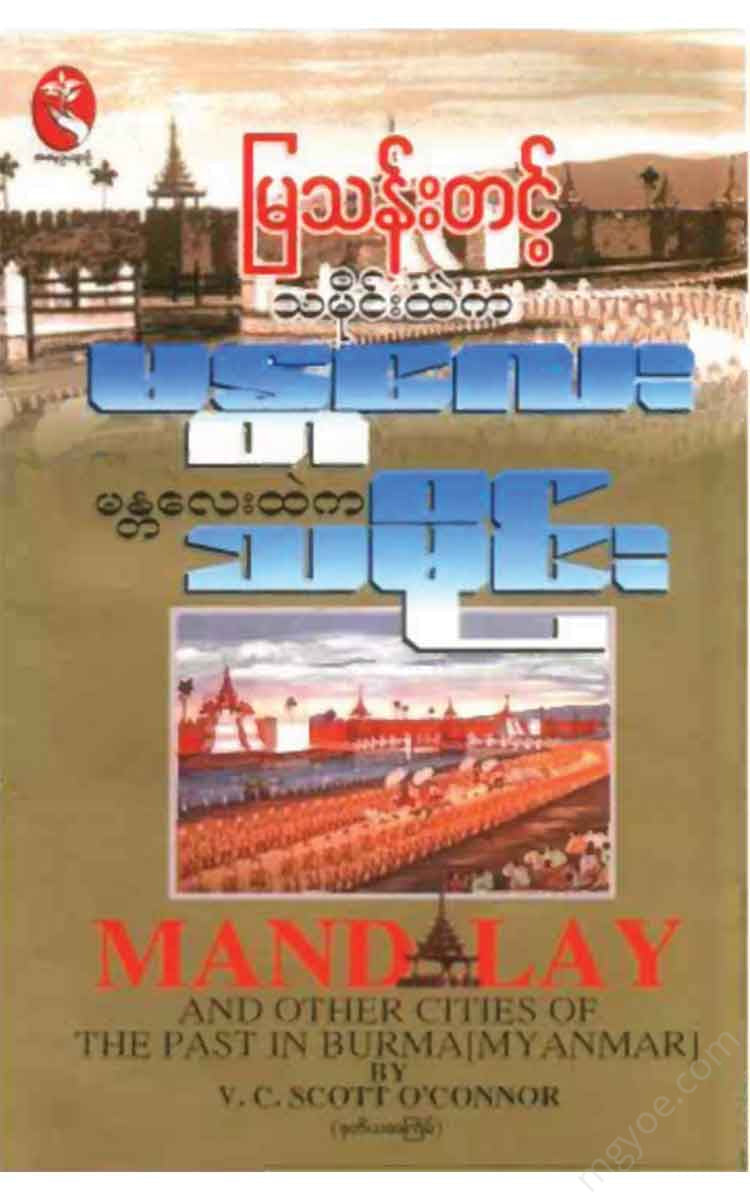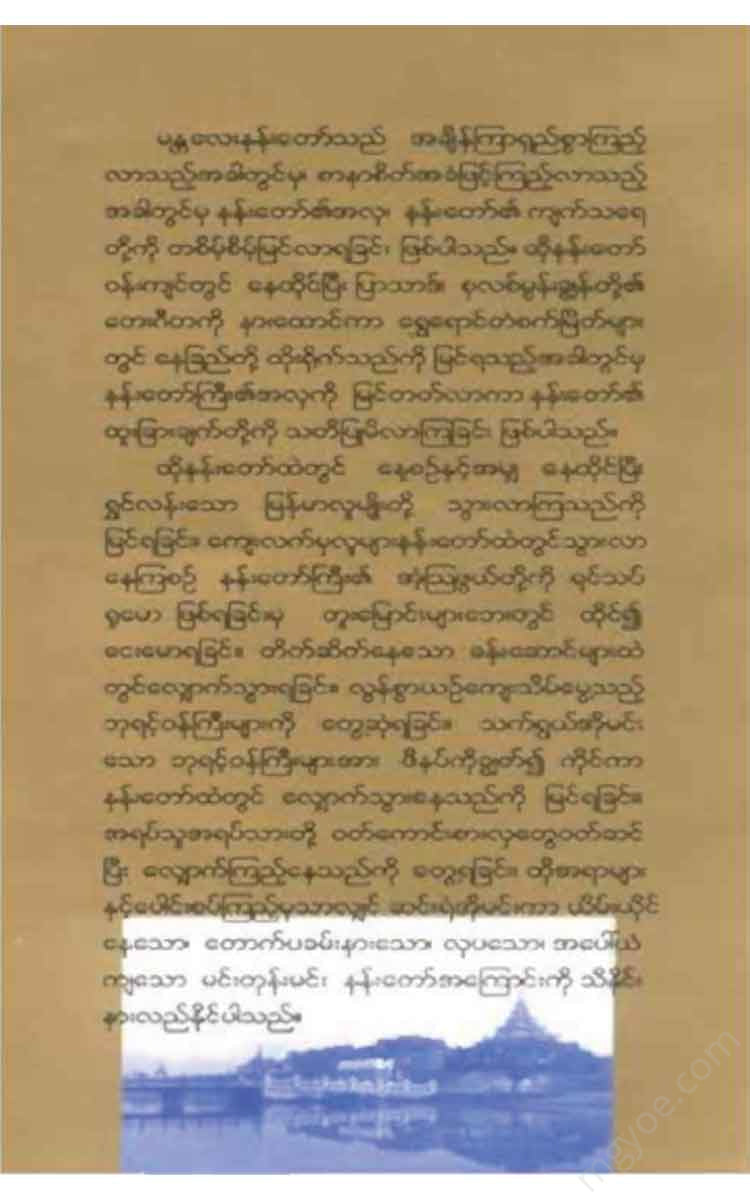Other Websites
Mya Than Tint - Mandalay in history, history in Mandalay
Mya Than Tint - Mandalay in history, history in Mandalay
Couldn't load pickup availability
1 History from Mandalay, Mandalay from Mine
[1]
The ancient capitals of Burma, spread over a thousand miles from Tagaung to Tanintharyi, bear witness to the history of Burma. Of these, Mandalay is the newest. Yet Mandalay is but a shadow of the past. Mandalay is the seat of a dynasty that is no more, of a splendor and a culture that is fading into oblivion, of a palace that has been built, of a spirit that has disappeared.
In Yangon, expectations are looking to the coming and the coming of the awaited golden age. In Mandalay, the only question is how long the city walls and the palaces will last. How long will the golden palace pillars and the slender, pointed pagodas speak of a center that will never be inhabited?
The energetic, forward-looking spirit of Yangon is already growing impatient with the pale competition of the once royal city. The decaying city is already mocking the careful and costly preservation of some of the splendor of its past by the Viceroy of India.
There are already voices in the business world saying, "Throw these things away. We don't care about Mandalay and its glory. We need money to do better things."
Thus, Mandalay, the king's capital, would soon be in ruins.
Even 50 years ago, Mandalay was not as prominent as it is now. If you look at Henry Yule's account of 1855, you will find not a single word about Mandalay. There is nothing in the empty space below Mandalay Hill. There is nothing under the beautiful map of the old capital.
The origins of Mandalay are only briefly mentioned. In 1853, King Mindon ascended the throne of Burma. By 1856, King Mindon had become very tired of his capital (Amarapura). In his mind, Amarapura was associated with the unfortunate rule of his predecessor and the decline of his country. King Mindon wanted a good start. He wanted to be famous. The people
He wants the people to forget the disasters that occurred during his dynasty.
Here, King Mindon dreamed of building a new city. He consulted with wise men and astrologers. In fact, King Mindon was simply following the Burmese tradition. The long-held desire to move to a new city became strong.
The East - In the ancient East, partial actions were not emphasized.
Thus, on February 13, 1875, the year of the terrible uprising in India, the first Panneks of Mandalay were laid to appease King Mindon. | One hundred and fifty thousand people, at the behest of King Mindon, abandoned their homes and their surrounding communities and moved to the new, empty city.
King Mindon also appointed five chiefs to oversee the construction of the new city. The new city was to have an area of (6666) square feet. The city wall was to be (18) cubic feet high. There were to be watchtowers at every (555) foot distance along the city wall. There were to be twelve gates around the city wall. The four main gates were the main gates, which led out of the palace in the four directions. In building such a city wall, special care was taken to ensure that it was in accordance with the traditions of the ancient Burmese kings. An interesting fact about the architecture of Mandalay is that this ancient tradition was preserved.
There are some arguments against preserving tradition. When the new city was built, people in Amarapura were terrified. In Mandalay, the king himself declared that the old tradition was not followed.
Instead, oil pots were buried in the corners of the moat. Shrines to the guardian deities were built under the supervision of the astrologers. King Mindon's
In the beginning of the peaceful era, there was no violence or massacre. However, | a few years later, King Mindon's successors abandoned King Mindon's generosity. A (225) foot wide moat was dug around the city wall and a green lawn was planted between the moat and the city wall. The old palace was demolished from Amarapura and moved to Mandalay. The objects in the Mandalay palace, such as the large gold-plated pillars, the sculptures, the thrones, and the other items were brought from the old city of Amarapura. The palace was surrounded by large teak logs 20 feet high and a brick wall was (15) feet high inside the city wall. A (60) foot wide path was laid between the wooden wall and the brick wall.
Now, only a few of these remain. (In June 1857, the king and his entourage moved to Mandalay with great ceremony. When they arrived in Mandalay, the king stayed in a temporary palace. The king himself supervised the construction of houses for the people. When the king and the nobles had moved, the religious authorities moved. About 500 monks and monks from the religious order carried the Buddha image and the three books of the Dhamma on a scaffold. The images were covered with eight golden umbrellas, and the Dhamma and the books of the Dhamma were covered with six golden umbrellas. The monks were covered with four white umbrellas. The five hundred monks each had two white umbrellas. The king, queen, mother, crown princes, and ministers were all present at the gate of the palace.
When the palace was completed, the king and queen were crowned in full regalia.
From the heart of this new city, where the sound of British steamers could not be heard to disturb his mind, King Mindon, one of the most upright of all the kings who ever lived in Burma, ruled for over twenty years. His policy was one of benevolence and peace.
King Mindon wanted to establish a friendly alliance with a powerful neighbor (the British Government of Lower Burma), which had already taken over more than half of his father's and grandfather's empire. If only he had had a successor who was as far-sighted and peace-loving as he was, his country might have retained at least a measure of independence for many generations to come. His people might have preserved the ideal of progress, which gives life and color to dry bones. But a young man of uncertain character, a man of dubious lineage, and even more dubious courage, succeeded to the throne of King Mindon. The fate of the country was to fall victim to the intrigues of women. Even though these women were prosperous within the city walls, they knew nothing about the outside world.
The Burmese throne was weak. The Burmese spirit was arrogant to the point of arrogance. Instead of obeying orders in the hands of the British, they were ready to play the dangerous game of forming an alliance with another European power.
In the circumstances of that time, there was only one conclusion to the adoption of such a policy. That conclusion came on November 28, 1885. This was seven years after the death of King Mindon. By that time, King Thibaw had surrendered to the British army. Burma had ceased to be a sovereign state.
That history, full of interesting people and events, is still fresh in the memory of the world . It is still fresh on the lips of those who participated in those events.
More than one historian has written about it. Therefore, I will not go into detail about that history here. However, in describing Mandalay as a historical city, it will be necessary to briefly describe the ending.





